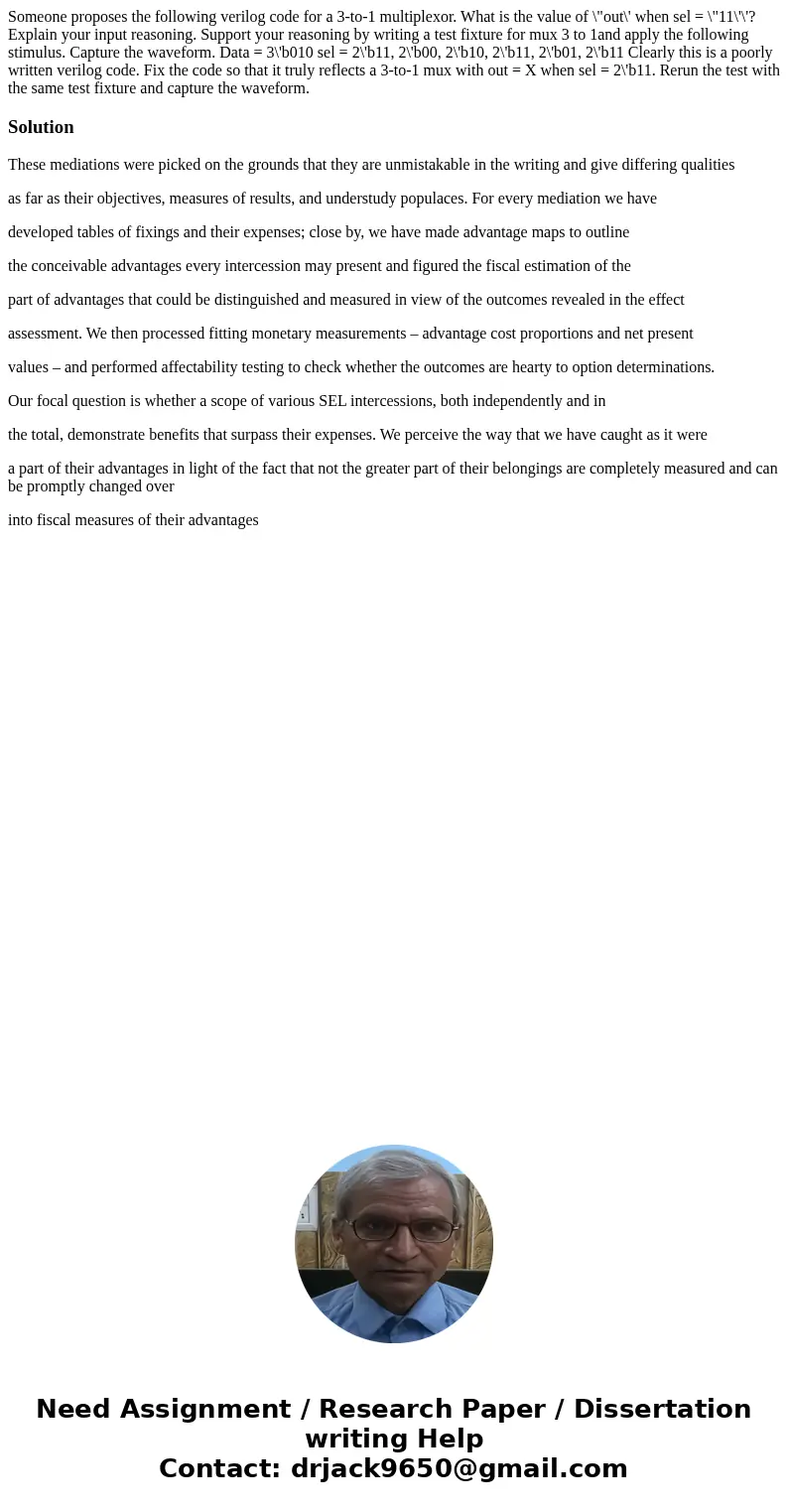Someone proposes the following verilog code for a 3to1 multi
Solution
These mediations were picked on the grounds that they are unmistakable in the writing and give differing qualities
as far as their objectives, measures of results, and understudy populaces. For every mediation we have
developed tables of fixings and their expenses; close by, we have made advantage maps to outline
the conceivable advantages every intercession may present and figured the fiscal estimation of the
part of advantages that could be distinguished and measured in view of the outcomes revealed in the effect
assessment. We then processed fitting monetary measurements – advantage cost proportions and net present
values – and performed affectability testing to check whether the outcomes are hearty to option determinations.
Our focal question is whether a scope of various SEL intercessions, both independently and in
the total, demonstrate benefits that surpass their expenses. We perceive the way that we have caught as it were
a part of their advantages in light of the fact that not the greater part of their belongings are completely measured and can be promptly changed over
into fiscal measures of their advantages

 Homework Sourse
Homework Sourse